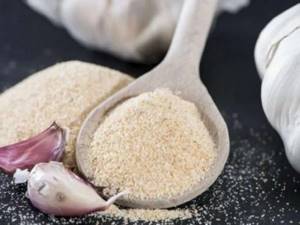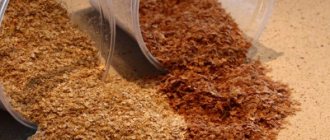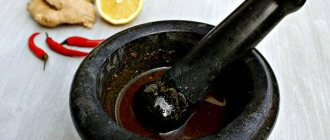Vegetable growing » Garlic
2
1366
Article rating
Kira Stoletova
It happens that in the spring garlic bulbs begin to sprout. Many people throw away sprouted garlic, considering it unfit for food, but it can be eaten.
Benefits and storage of sprouted garlic
About the chemical composition of garlic
Regardless of whether you like garlic, the medicinal properties of this plant cannot be disputed. The healing characteristics are due to the rich chemical composition, which can be described as follows: Essential oil, which is a complex of sulfur compounds - polysulfides. It is to them that garlic owes its sharp, specific smell. A complex of vitamins, as well as macro- and microelements necessary for the normal functioning of the body.
In terms of the content of vitamins B and PP, garlic is significantly ahead of carrots. Allicin, which is formed under the action of enzymes and oxygen, is a powerful bactericidal component that microbes cannot resist. Protein in garlic is found in larger quantities than in potatoes or cabbage. Interestingly, the ancient Egyptians knew this. They included garlic in the pyramid builders' diet to improve their performance. Garlic is rich in carbohydrates. Its calorie content is 106 Kcal.
How to freeze
Before you begin the freezing process, you need to decide what exactly will be frozen: arrows, heads or slices. If you decide to freeze the shoots, then you need to have time to cut them off during the period when the stems are juicy and tender, at the beginning of growth. If there are heads and cloves, then you need to check that the heads are hard, dry, and the cloves are easily separated from each other.

You can freeze in different ways, after analyzing the pros and cons of each, as well as the degree of complexity or simplicity of the process, you can choose one of the following.
Clove paste
The main advantage of this method is the pronounced aroma of the resulting paste; the disadvantage is that the preparation process is quite labor-intensive.
- Peel the cloves, grind through a meat grinder or grind in a blender.
- If desired, add crushed aromatic herbs to the resulting gruel: basil, dill, parsley; they will perfectly complement the taste.
- Stir and spoon into plastic containers or ice cube trays.
- Place in the freezer.

Arrow paste
The paste turns out to be an incredibly beautiful color - emerald, with a rich aroma. It can be used in fish and meat dishes, and can also be added when preparing sauces and dressings.
- Wash the arrows and remove the hard part. Dry on a towel.
- Cut into small pieces and pass through a meat grinder or grind in a blender.
- Add salt (per 500g of arrows - 1 tsp of salt) and refined vegetable oil (per 500g of arrows - 2 tbsp of oil)
- Stir and place the paste into containers.
- Place in the freezer.
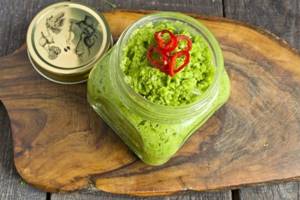
Unpeeled slices
The main advantage of this freezing method is speed. But it should be taken into account that after defrosting the shape will be lost and it will not be possible to clean the slices.
- Dry the head well.
- Place the unpeeled slices into bags
- Place in the freezer
Peeled slices
They do not require cleaning after defrosting and are ready to eat immediately. It is worth considering that after defrosting, the slices will no longer be so hard and elastic, and their appearance will also be lost.
- Select undamaged slices
- Peel the husks from the cloves
- Place the peeled slices into bags
- Place in the freezer.
Just arrows
A simple method that preserves the unique aroma of fresh garlic as much as possible.
- Wash and dry the arrows.
- Remove the hard part of the arrow
- Cut into pieces 3-4 cm long
- Boil for 5 minutes in boiling water
- Cool and dry on a towel
- Place in bags, release as much air as possible and seal
- Place in the freezer.
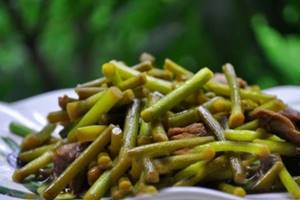
How does storing garlic depend on its type?
There are two types of garlic (not to be confused with the variety): winter and spring. The first ripens from mid-July to a maximum of mid-August. It all depends on the time of planting and weather conditions. The spring variety ripens by mid-August, and can be harvested until the second or third decade of the month. You definitely need to remember these two types, because many people wonder: how to store garlic so that it doesn’t dry out in the winter until the new harvest? The fact is that some housewives unknowingly collect winter crops for storage in the hope that they will last until spring, but are surprised and disappointed to find the product unsuitable for food.
It turns out that only spring garlic, that is, collected at the end of summer, can be well preserved until spring and even early summer. Since it ripens sufficiently, it is poured and becomes capable of long-term storage. On the contrary, winter garlic is young, without many white and smooth scales. It can be stored for no more than 2-3 months, so it is advisable to eat it immediately, without prior drying.
What happens to garlic in the freezer?
There will be nothing left in the freezer with chopped garlic if you prepare it correctly. It will not become damp, will not become soft, and will not lose its astringent taste.
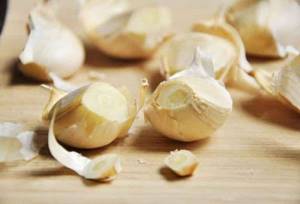
The freezer is one of the best ways to preserve not only garlic, but also other vegetables, both whole and cut. The shelf life is extended to 12 months - exactly until the next harvest.
Advice You can immediately place some of the heads in the freezer, or you can save drying fruits in this way closer to winter. But you should not freeze those cloves that cannot be stored fresh.
Another way to provide your family with the benefits of garlic for the winter is to add the cloves to homemade preserves. But still, in the freezer, raw garlic will remain as vitamin-rich and tasty as possible.
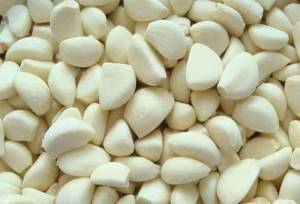
Preparing garlic for long-term storage
If garlic is properly prepared for storage, you can practically not worry about its future fate. Whatever storage method you choose, processed garlic will last much longer without loss than unprocessed garlic. The first step is to scorch the roots of each head on a stove or over a fire to prevent the bulbs from sprouting.
In order to prevent mold and other diseases, garlic can be processed as follows: heat half a liter of vegetable oil on the stove for two hours, add 10 drops of iodine. Then dip the garlic in oil and dry it in the sun. These preparatory procedures are desirable, but not required. Let's say if you are not sure that the garlic is dried enough. Or it turned out that you dug it up in wet weather. Or left it in the garden for too long. In these cases, additional protection for the bulbs will not hurt. But when you have done everything “by the book” - harvested the crop on time and dried it well - you can immediately move on to choosing a place and method of storage.
Landing
What to do with sprouted garlic besides eating it directly? An excellent solution would be to plant it. Below we will look at how to plant sprouted garlic in a summer cottage garden. In order for the harvest to be large and of good quality, planting material must be stored in a cool place with a minimum positive temperature .
If you place garlic in a warm room at room temperature, the crop will grow, but will be smaller in size and of poorer quality.
Before planting directly with sprouted garlic, you need to do the following:
- Divide the head into parts and select only the largest segments without damage in the form of dark spots and cracks.
- Disinfect the slices with an ash solution. To do this you will need 300-500 grams of ash per two liters of water. Boil the mixture for half an hour, and then, after cooling, soak the planting material for one and a half hours.
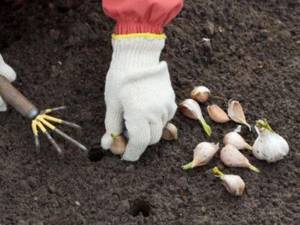
Garlic should be planted in prepared soil so that it can sprout and grow well. The soil must be carefully dug up and weeds removed from it. Then pour with salt water.
Garlic is planted in the spring. The interval between the cloves when planting should be 10 cm . The planting depth is about 5 cm; you must be careful not to damage the root system and feathers of the sprouted garlic. Garlic must be fed with humus or chicken droppings.
The soil must be loosened and weeded in a timely manner, and watered regularly. When garlic is growing, it needs to be watered abundantly. During the ripening of the bulbs, watering should be reduced to moderate, and a month before harvesting, watering should be stopped.
We invite you to watch a video about planting sprouted garlic:
If you are interested in other ways to use garlic, then we suggest you learn about the benefits of the husk, mixture with kefir, consumption on an empty stomach, Tibetan tincture, inhalation.
Storing garlic in nets and bags
Linen bags and nylon stockings are excellent for storing garlic. Place the prepared heads in them and put them in a dry, dark place. If the air humidity in the room is low, you can sprinkle the garlic with onion peels; if it is high, the bag or stocking should be treated with a saturated saline solution (dip in salt water and dry). This method is the most common, its effectiveness is confirmed by many housewives.
Storing garlic in nets in which vegetables and fruits are sold. This is a fairly convenient option; properly dried bulbs, folded in such nets and hung in a dark place with a suitable level of temperature and humidity, do not spoil for about 3 months.
Storing peeled garlic
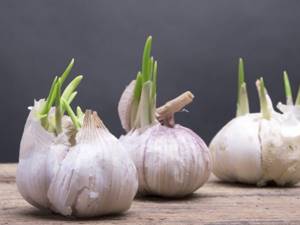
Peeling the garlic
There are many varieties of garlic vegetables, which are distinguished by the size and color of the peel. The degree of its keeping quality can be determined by the time of planting and collection. Winter garlic is planted in the fall, harvested in August and stored until spring. Garlic planted in spring is called spring garlic. Do not use for long-term storage. To preserve valuable substances in the bulbs until the end of winter, you need to know several ways to store sprouted peeled garlic.
In a refrigerator
Healthy cloves are selected for storage, after discarding the damaged ones. The vegetables are placed in a paper bag and placed in the refrigerator. In a plastic bag they can suffocate and the process of rotting begins. Use within a month.
In the jar Wash the jar thoroughly and dry it. Place peeled garlic in it and add oil. Store in a dark place. This oil is added to various dishes, preferably salads.
Freezing
To prevent the bulbs from losing their beneficial properties, they are frozen. The cloves are placed in polyethylene or a container and placed in the freezer. It is recommended to defrost at room temperature before use.
In flour
Place peeled garlic in a sterilized glass jar. Cover with flour, cover with a lid and place in a dry place. The phytoncides of garlic culture drive away parasites from flour.
In salt
Place salt and peeled garlic bulbs in layers in a container. Store in a dry, dark place.
In wine
Fill the container halfway with garlic cloves. Pour dry wine of any kind. Marinate. Sometimes wine is replaced with vinegar, but the product will have a sharper and sharper taste.
Garlic salt
Seasoning lovers have found an unusual way to store sprouted garlic. Recipe: peel the slices and dry them. Grind in a coffee grinder. Add salt and seasoning, for example, ground pepper, curry, celery, basil in a 1:1:1 ratio. Mix thoroughly. Store in a dry, closed jar in the refrigerator.
As a puree
To preserve all valuable microelements, taste and aroma, garlic is processed into puree. Using a blender, make a paste from the cloves. Add extra virgin olive oil. The resulting sauce is used within 7 days. In the cellar To prevent garlic bulbs from germinating for a long time, they are stored in stockings at a temperature below 5 degrees and a humidity of 50-80%
How to store garlic in the refrigerator
If the summer is dry, you can store garlic in the refrigerator in a glass jar, placing it on the refrigerator door. Thus, winter garlic is usually stored until spring.
Some people store peeled and sliced garlic in a jar and vegetable oil. Be sure to cover the jar with a lid with holes so that the garlic does not rot. This garlic stores well, and the oil is imbued with a pleasant garlic flavor. This oil is an excellent dressing for vegetable salads.
If you want to preserve garlic for as long as possible, then use this method of storing it: peel the garlic, grind it in a blender or meat grinder and freeze it in the freezer, use ice containers or simply in small plastic bags, placing the garlic mass no more than 1 ounce thick. centimeter Frozen garlic does not lose its taste and benefits.
How to make garlic powder
To make garlic powder, you need to take a completely dried vegetable (if it is not completely dry, you can wait until it dries or speed up the process by putting it in the oven). Afterwards, the garlic needs to be peeled and dark spots cut out. Place the dry cloves in a coffee grinder. We turn on the latter and wait until the product turns into powder.
The same goes for garlic, which has begun to rot. It is necessary to remove rotten places and also change the storage location of the garlic. It is better to choose dry and well-ventilated. Once the garlic is dry, it can be made into powder.
The finished powder must be placed in a jar. After this, you can take it during cooking. Very comfortably. In addition, in the form of dry powder, garlic can be stored for quite a long time.
